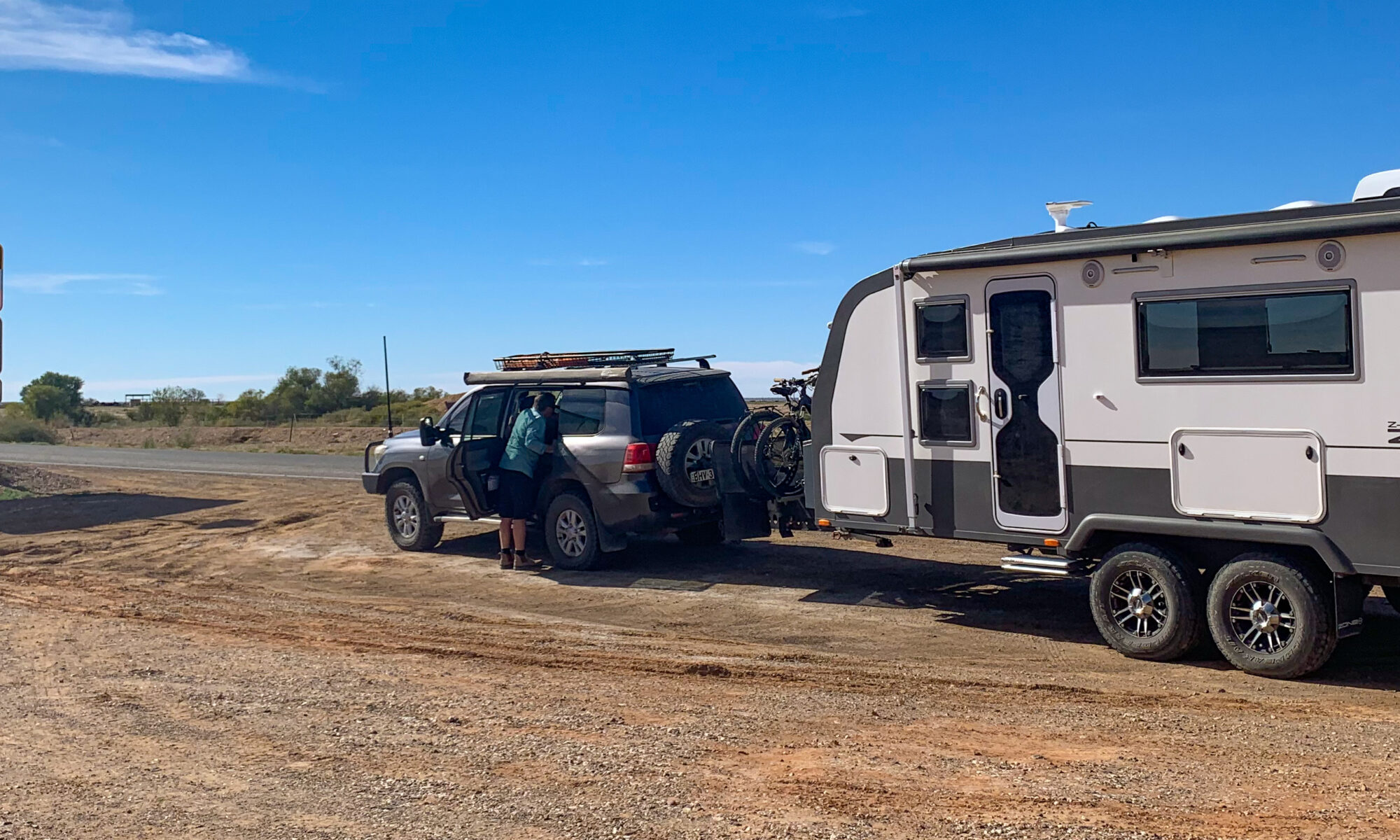Author: Mrs A
Location: Marree to Mungeranie, Birdsville Track, South Australia
We set off from Marree on a beautiful bright Sunday morning. The track from Marree has been recently graded, and apart from one or two deep sandy bits and the occasional cattle grid, was smooth driving. Even Tassie managed to get some sleep.
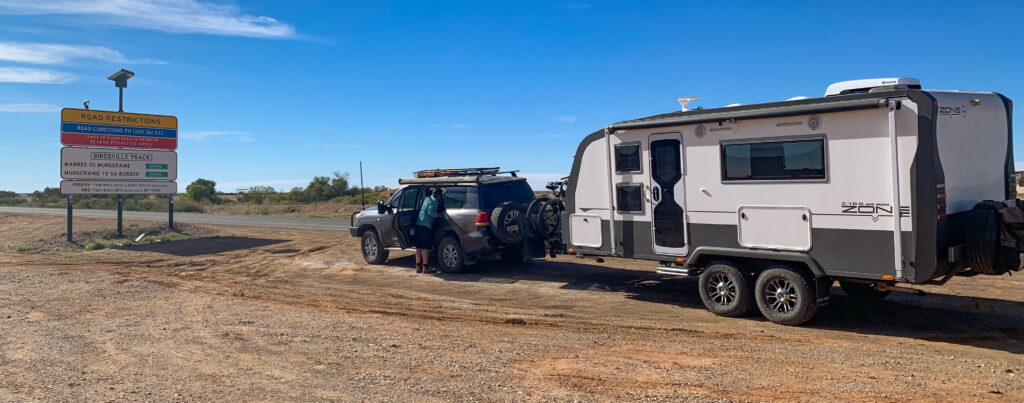
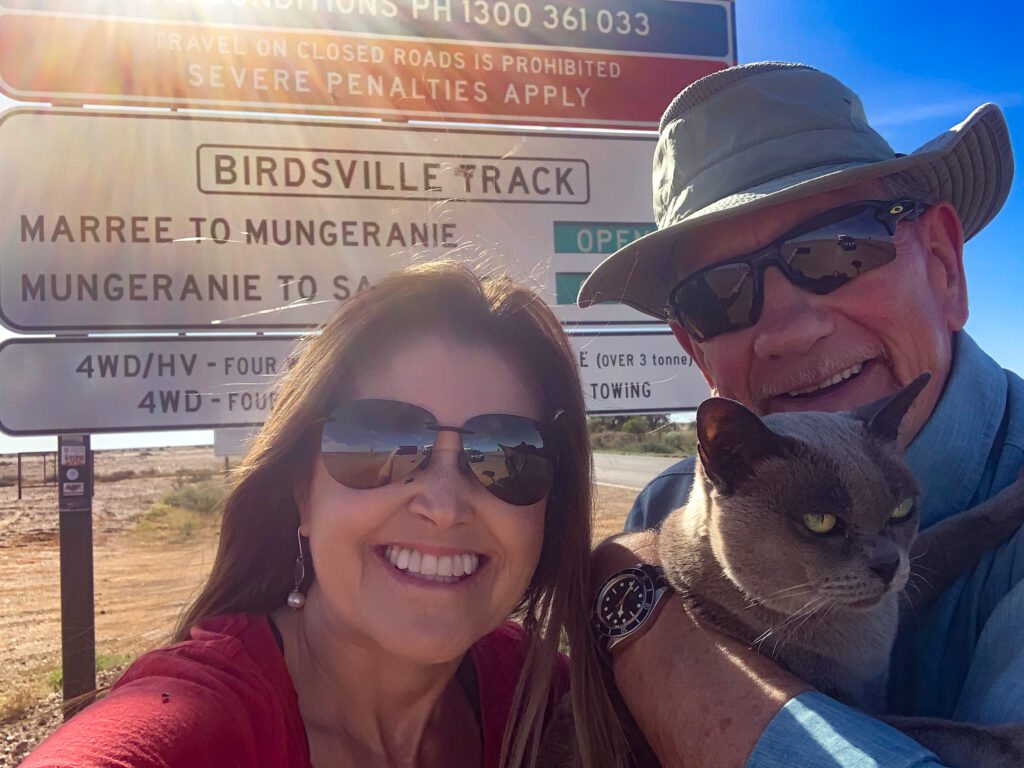
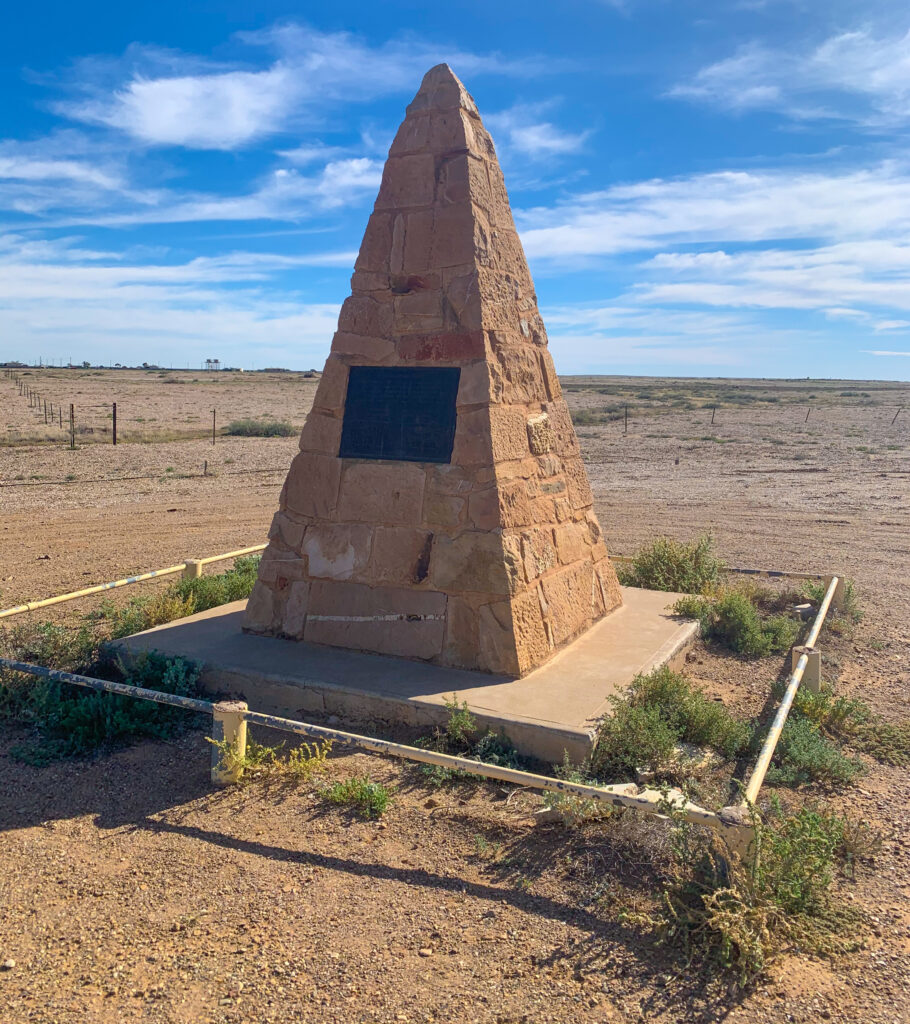
The Birdsville Track follows an ancient Aboriginal trading route which links several water holes. The route was then made into a track for mustering sheep and cattle to Adelaide. These days most of the sheep stations have changed to cattle stations, cows being a little more robust and able to protect their new born calves from dingos and wild dogs.
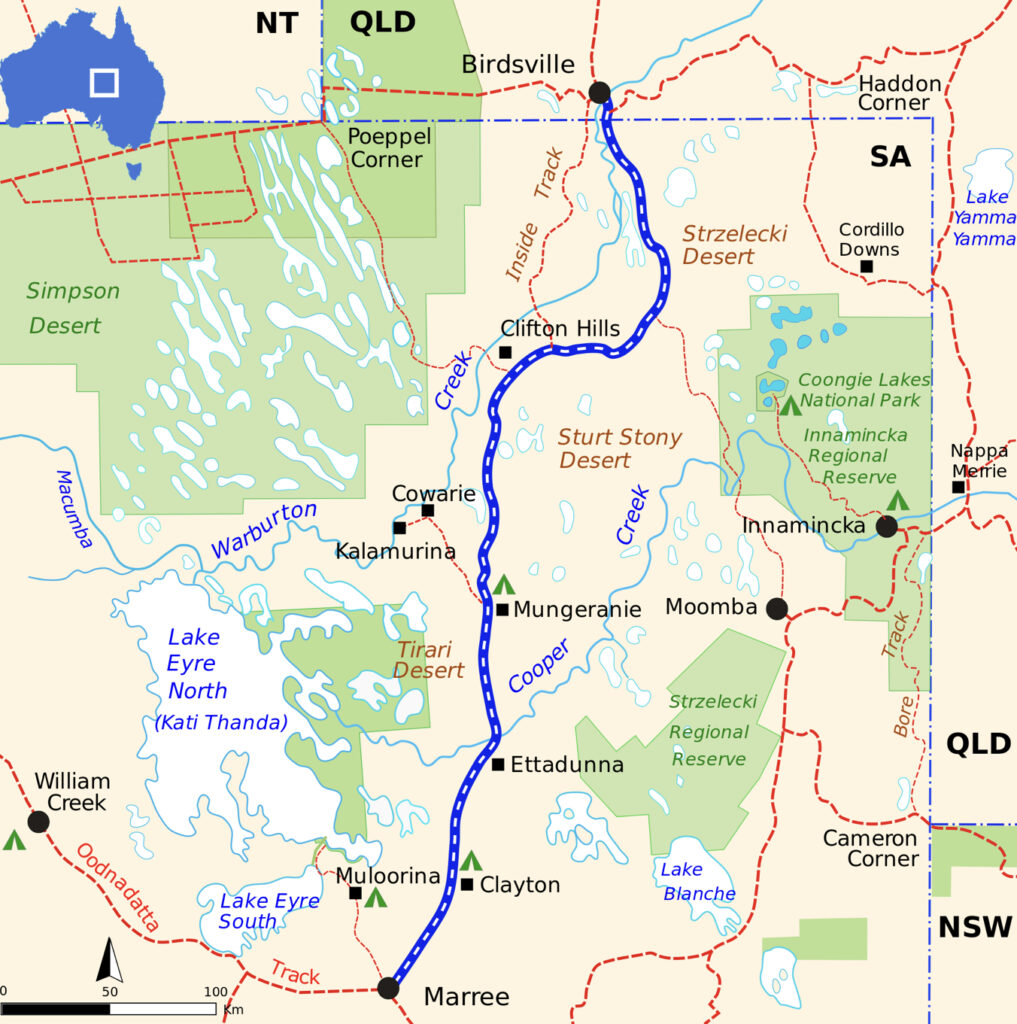
The route traverses three deserts; the Strzelecki, Sturt Stony Desert and Tirari Desert and as you would expect, the land is incredibly dry with no more than 10cm of rain falling per year. The survival of people, flora and fauna is predominantly thanks to the Great Artesian Basin – a huge underground freshwater reservoir which stretches more than 1.7million square kilometres. This huge water source is the world’s largest subterranean water basin and could fill Sydney Harbour 133,000 times.
Bores (a hole, often using a windmill to draw up the water) have been sunk into this reservoir, with approximately one every 40km along the track. In a few areas there are natural springs and seeps which form puddles and small wetland areas, essential for the survival of birds and mammals in this area. When the water emerges the temperature ranges from 30-100 degrees centigrade.
This area is closed to travellers in the summer months, when temperatures have been measured to reach 49.5 degrees centigrade in the shade. Phew! Temperatures are only getting hotter, with Birdsville, our next destination, breaking records only last year with more than 10 days on the trot over 45 degrees centigrade – and that was November, which is still classified as spring!
We pulled over for lunch at one of these bore sites, an area where the water comes out warm. An enterprising station owner had put in a large plastic basin and a huge tap, calling it an Artesian bath. As we arrived there were several people sat in the bath wearing fly nets, enjoying the warm water. I meanwhile had less glamorous tasks to do – using the naturally warm water to do some hand washing!
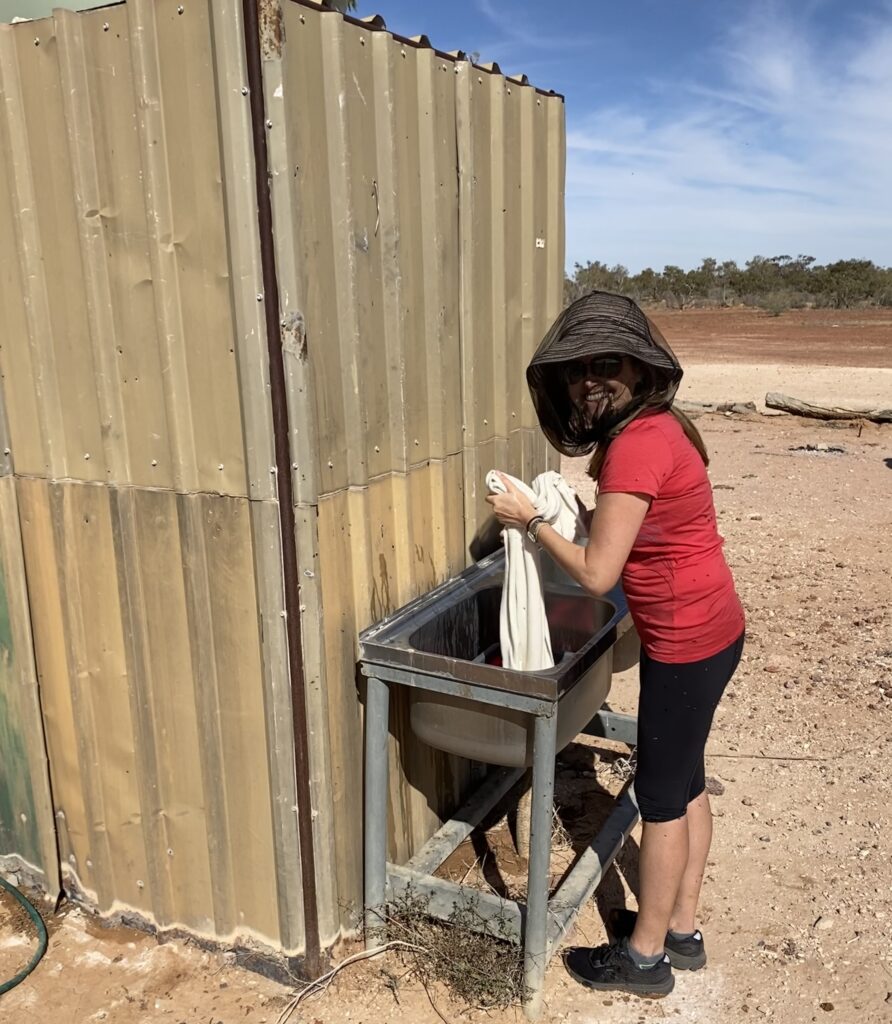
Fly nets are absolutely essential out here – you cannot leave your car without looking like an odd bee-keeper, but without it you would have flies in literally every orafice. They are incredibly annoying. Without insect repellant your arms and legs are black with little insects. The only thing in their favour is that they don’t bite, just annoy!
After lunch we had a look around the nearby wetland area to see what bird life was about. I was very excited to see a lone Budgie munching on seeds. He was very friendly and sat on a low branch chatting to me and seemed quite tame (more photos on our Instagram feed).
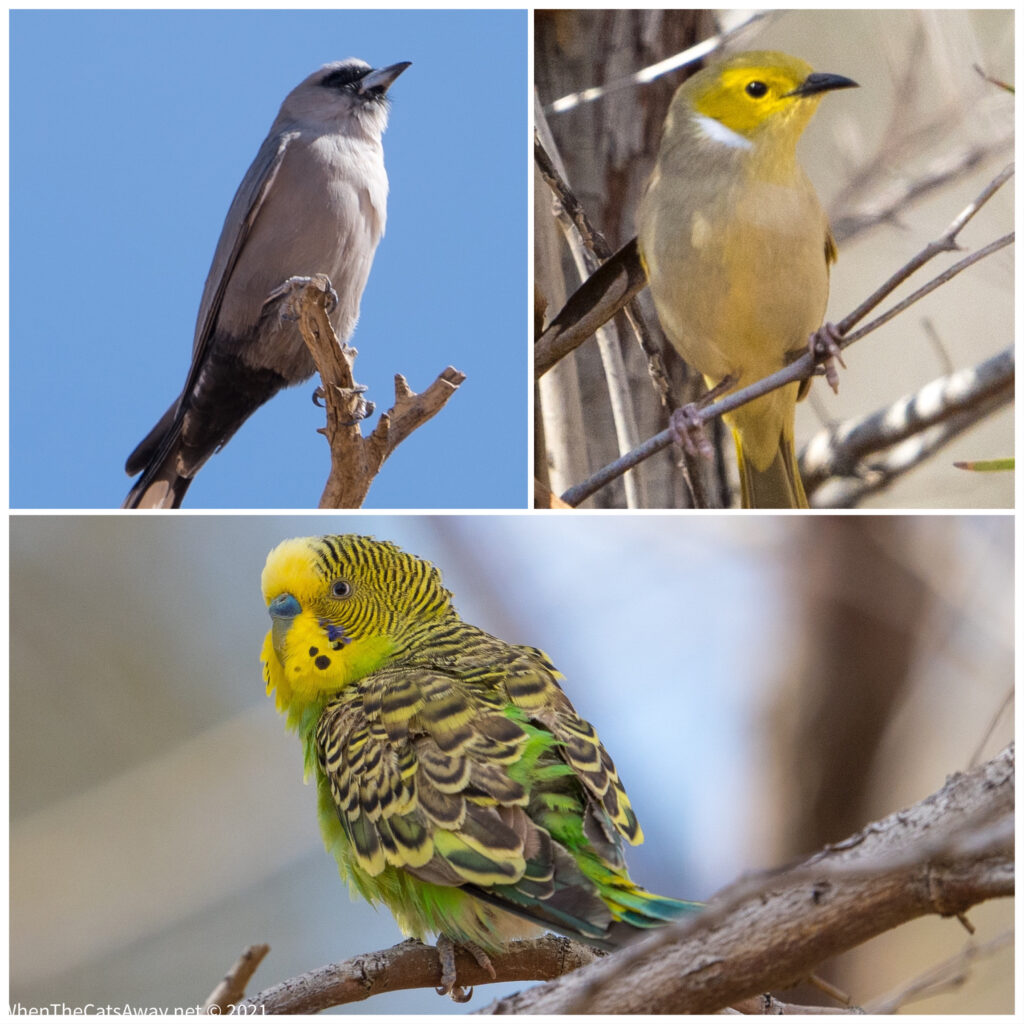
We continued on our way, taking a look at a couple of other locations before deciding to stop for the evening at the Mungeranie Hotel. After checking in at the bar and paying our $20 and were told to pick ourselves a spot along the tree line. We found ourselves a suitable space, and went to level up. It was at this stage I noticed an awful metallic scraping sound coming from underneath the caravan – never a good sign.
I looked and spotted one of our water tanks hanging down at an uncomfortable angle, with one of the two brackets completely missing. The second tank was hanging down and leaning on the wheel axel, one of its brackets hanging by a single bolt, the remainder scraping through the stones on the ground. Nightmare!
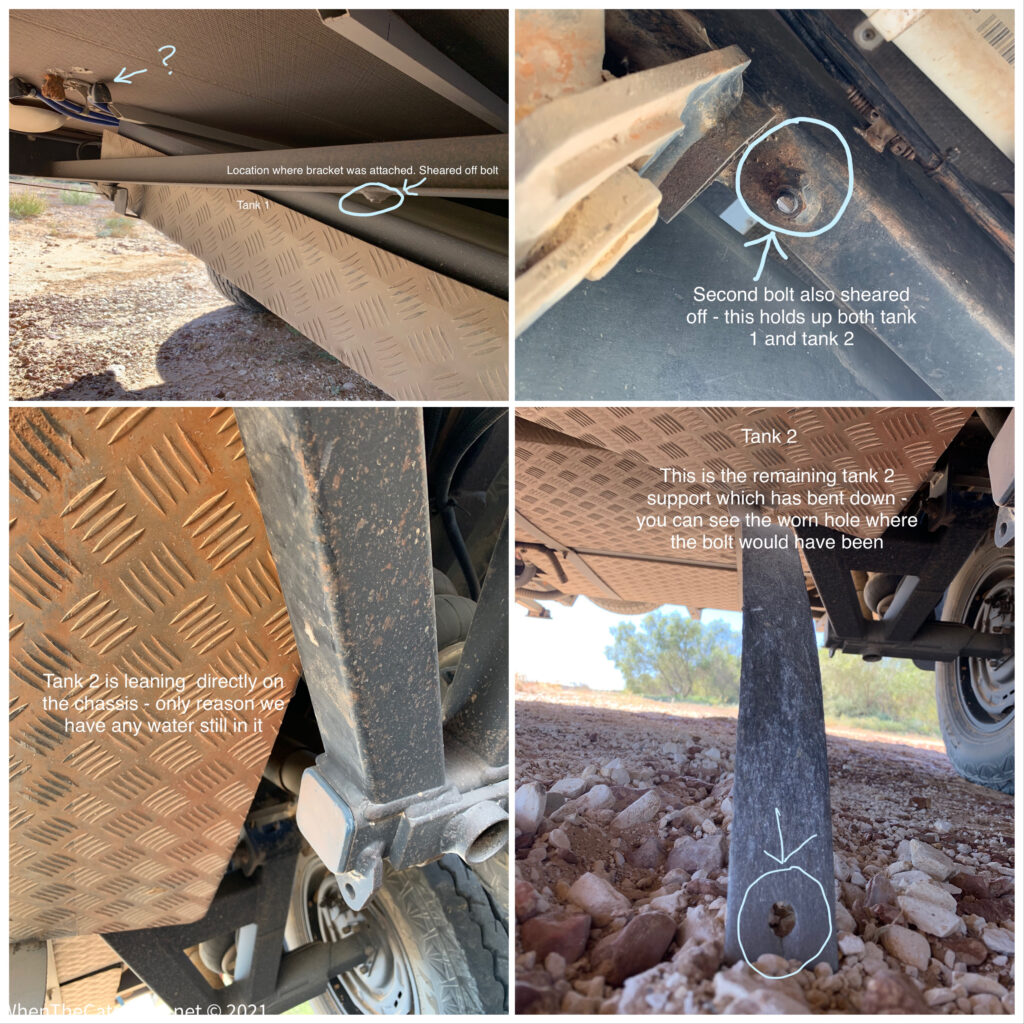
It surprised us to see this, given the road surface had not been that bad at all. Talking to other caravanners, they weren’t surprised with many saying it just takes one rock to hit a bolt or for it to weaken over time due to vibrations. Either way, we were in the situation we were in and clearly could not continue.
The majority of the Birdsville Track has no mobile signal, and we suspected this would be the same. Yup, checking our Telstra phones, not a single bar. We went into the hotel to ask there and they let us know they had Optus signal. This was hopeful.
We are carrying two mi-fis with us (mobile wifi units), one of which has a UK Vodafone sim card, the remainder of a plan we had signed up to last year while travelling in England and Wales. It has free roaming in Australia, but to be honest, has been pretty useless…until now. We turned it on and amazingly, full signal! Hurrah! We were able to make phone calls, do internet searches, and share our situation with fellow Zone owners on the Facebook group.
Over the next couple of days, our caravan insurance company (CIL) agreed to foot the bill for towing out our van and repairs to the brackets, and we had managed to book a guy called Blake to drive down from Birdsville to collect us.
Once all that was organised, we had some time to try and enjoy our surroundings. It was fly-central so the insect repellant and fly nets were essential ingredients to being outside, but we managed to have a look around. Mungeranie Hotel is located beside a small wetland, and being surrounded by arid lands, the area is teeming with birds, with flocks of Zebra finches and Budgerigars frequently seen flying from the trees and bushes.
We saw a lot of water birds too, many first time viewings for us.
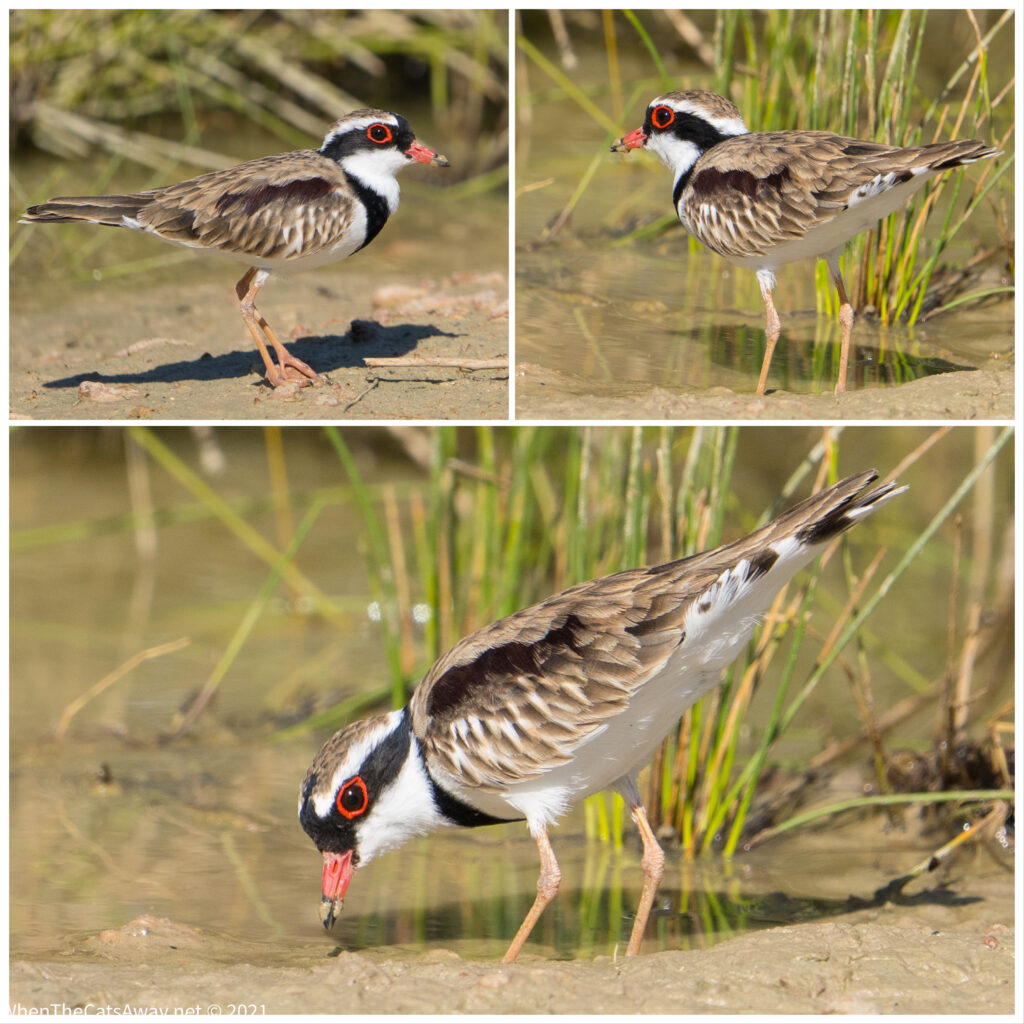
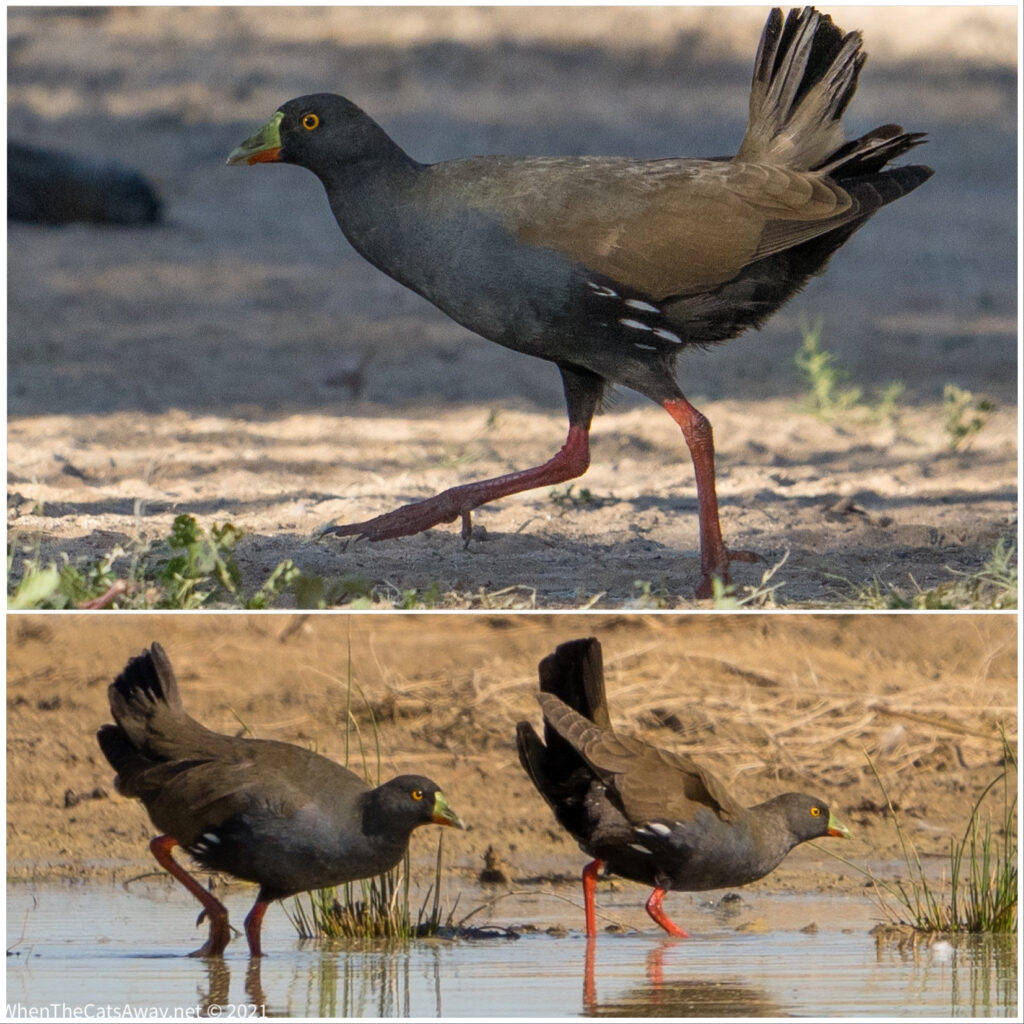
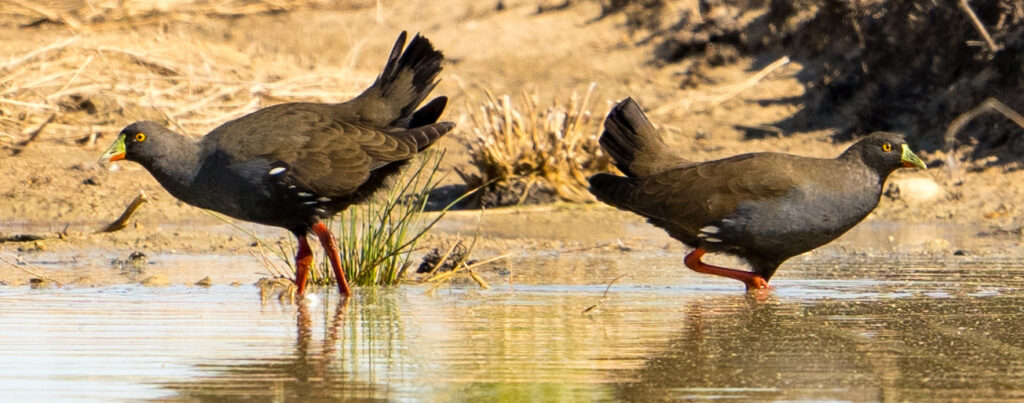
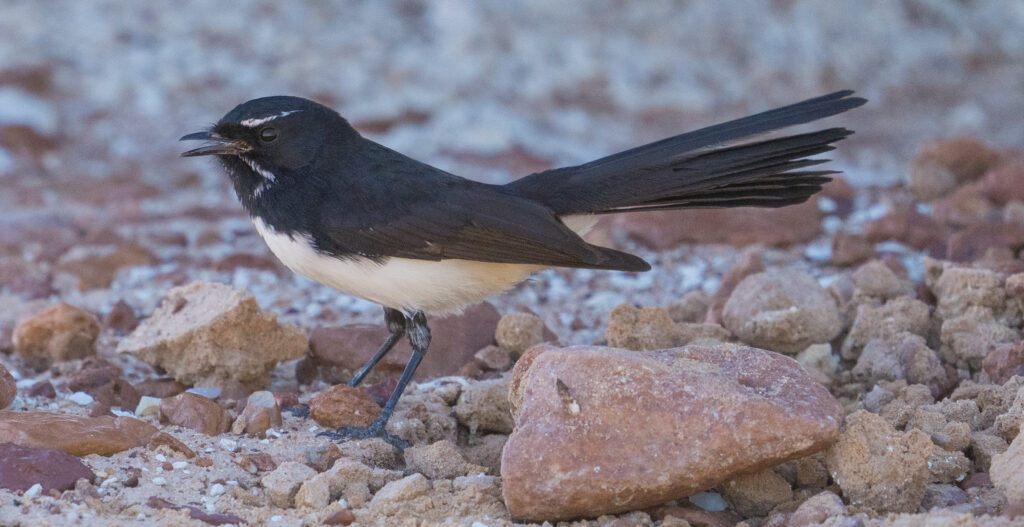
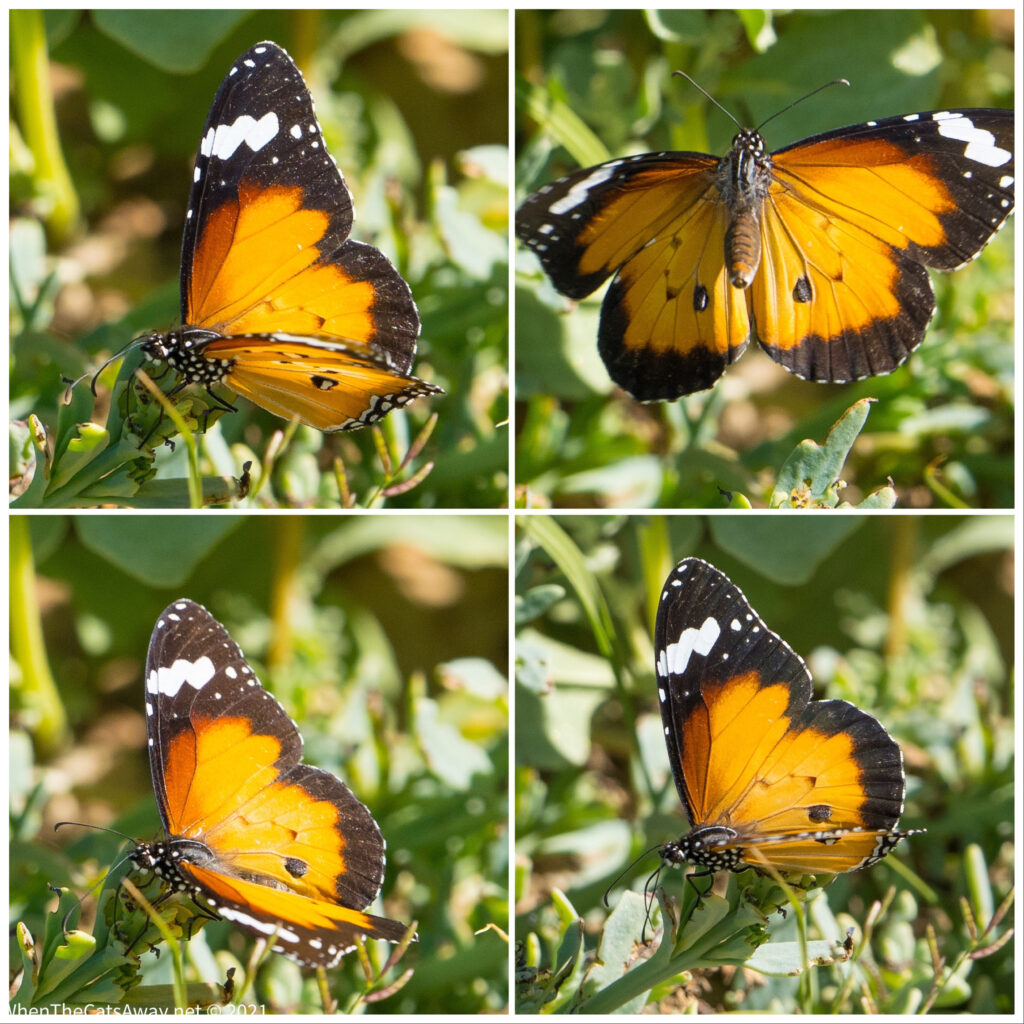
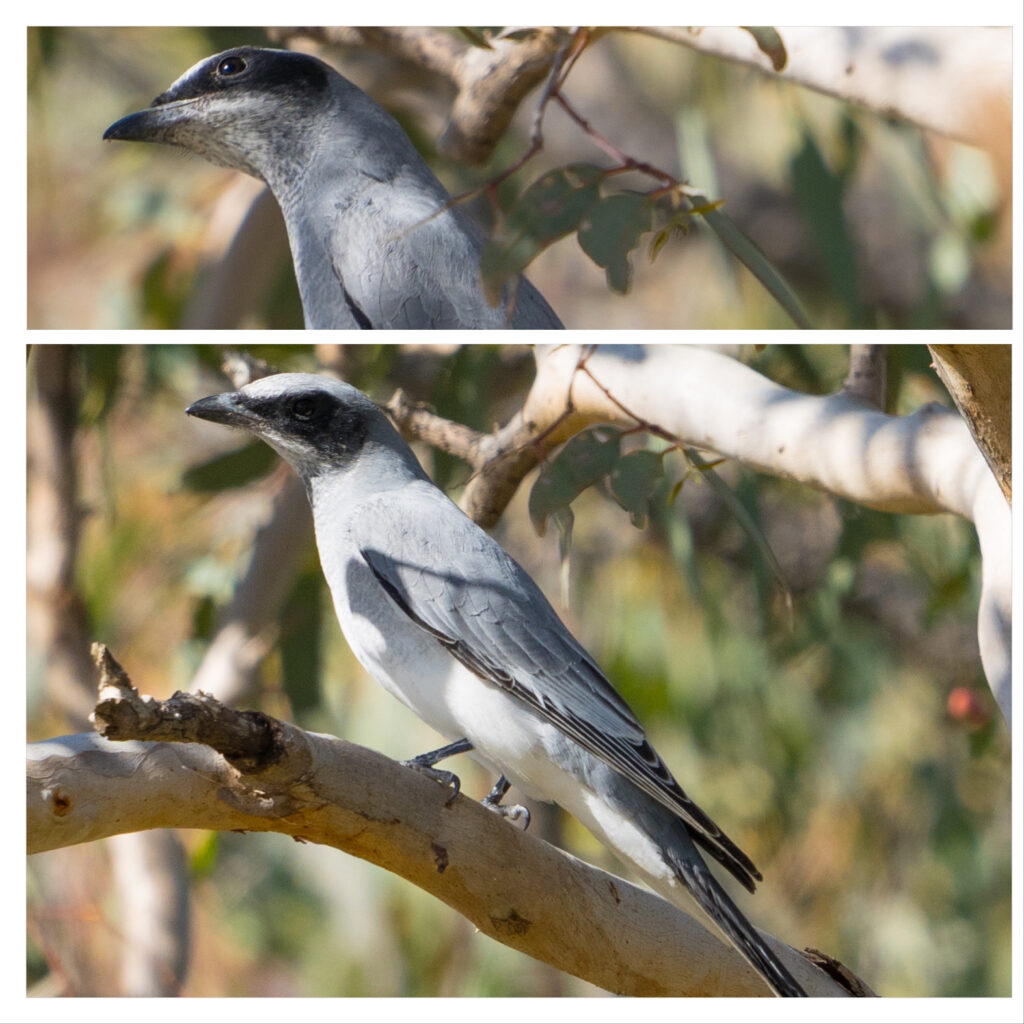
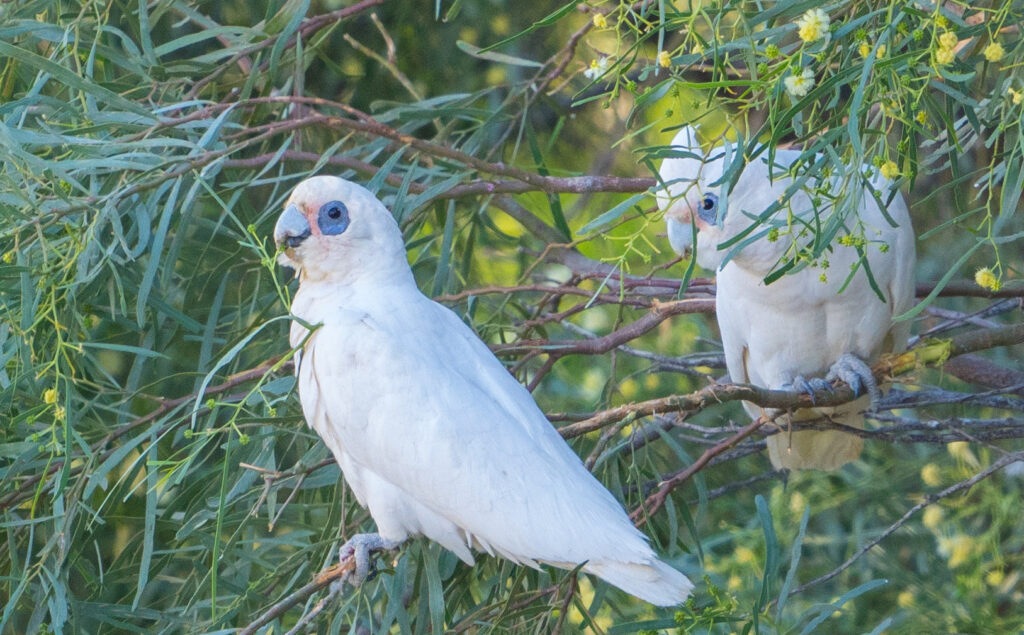
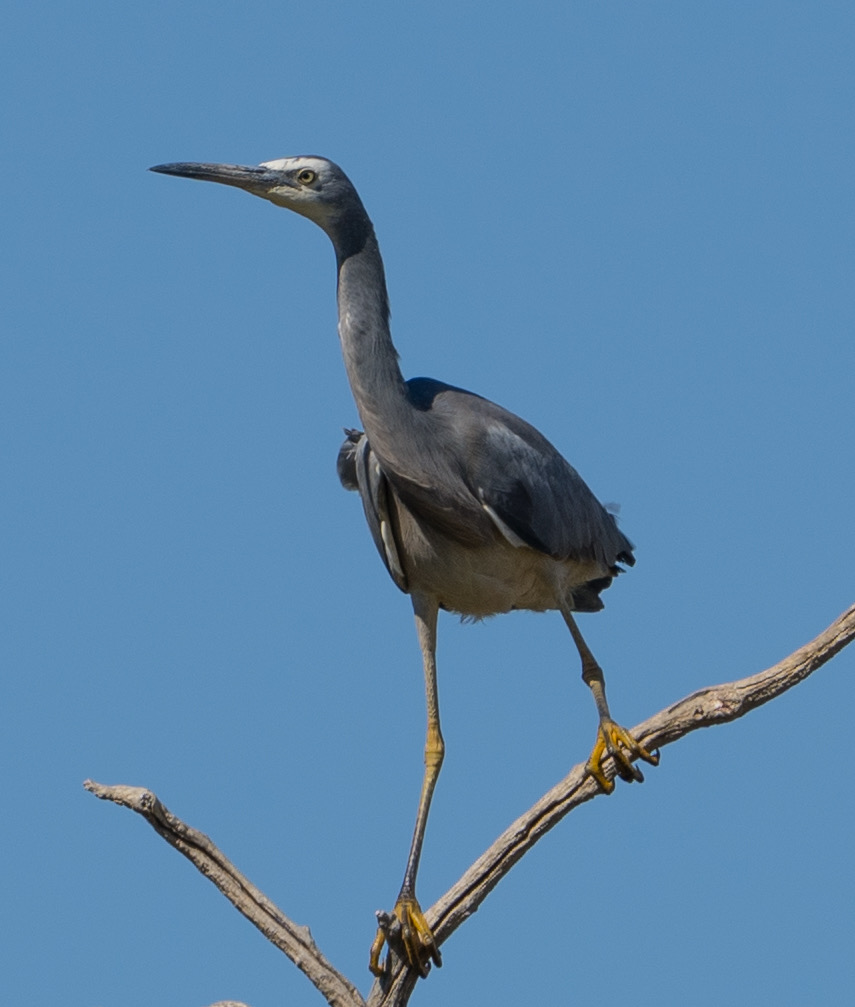
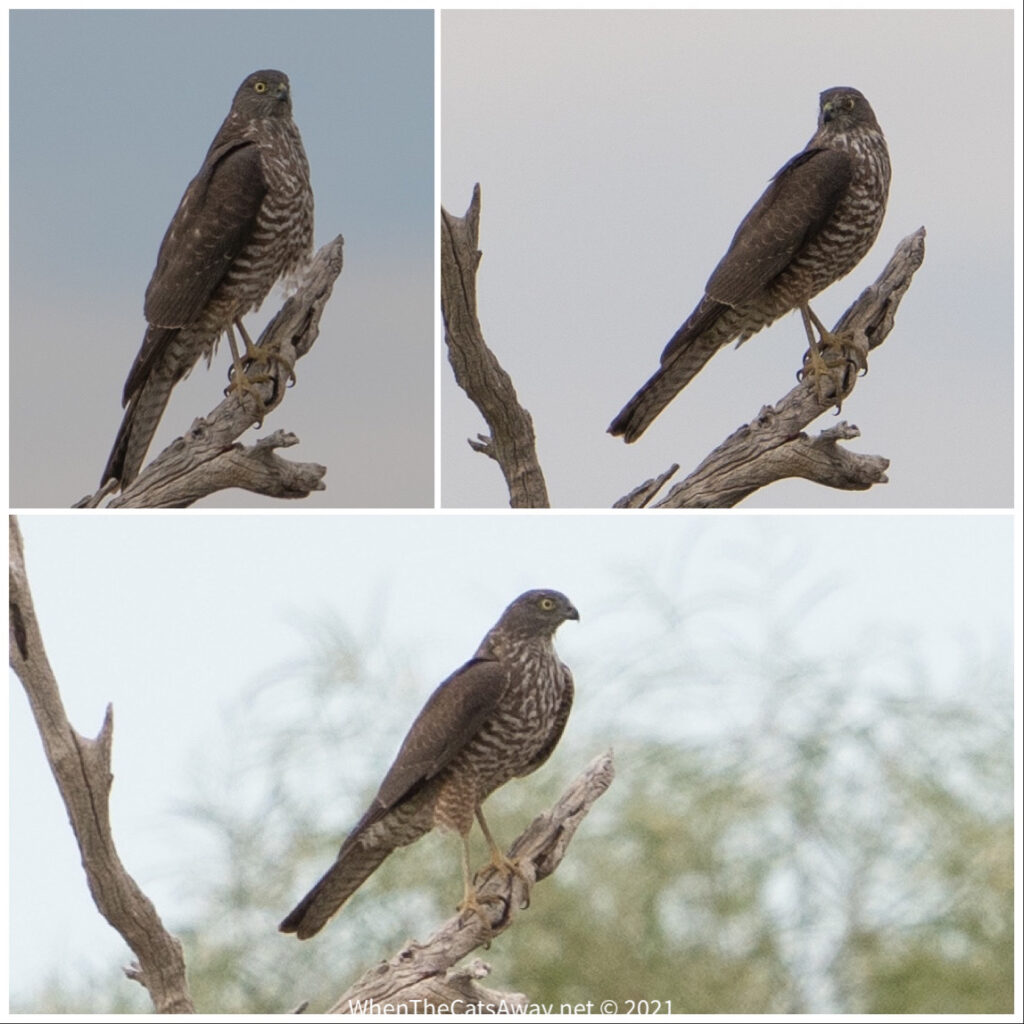
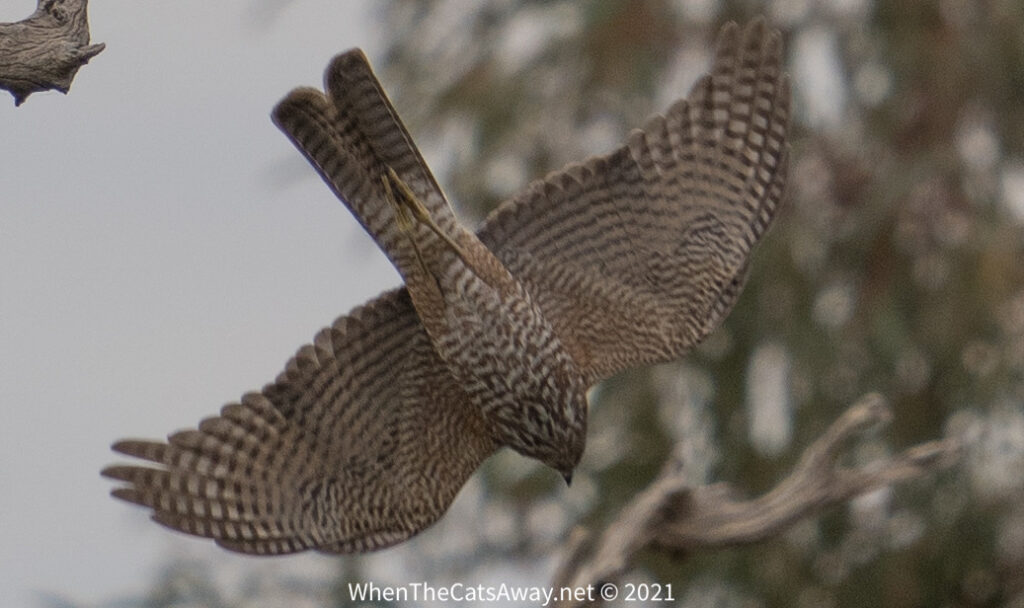
Of course it was impossible to be living 200 metres from a pub and not venture in. The Mungeranie Hotel is typical of Australian outback pubs – absolutely chock full of quirky character. The exterior is quite neatly kept, with a row of rusty old trucks on parade as you arrive up the driveway. Then there are the traffic lights and the ‘McDonald’s opening soon’ sign to give you a chuckle.
There has been a hotel at this location since the mid 1800s when the road was established as a stock route. At one stage there were also stables, a blacksmith, store and a police station, and drovers would let their cattle drink at the waterhole here. Everything was closed by the 1920s and this hotel as it stands was not licensed again until 1989. Today it is a roadhouse, offering very basic rooms, fuel, hot dinners and drinks, as well as space for camping.
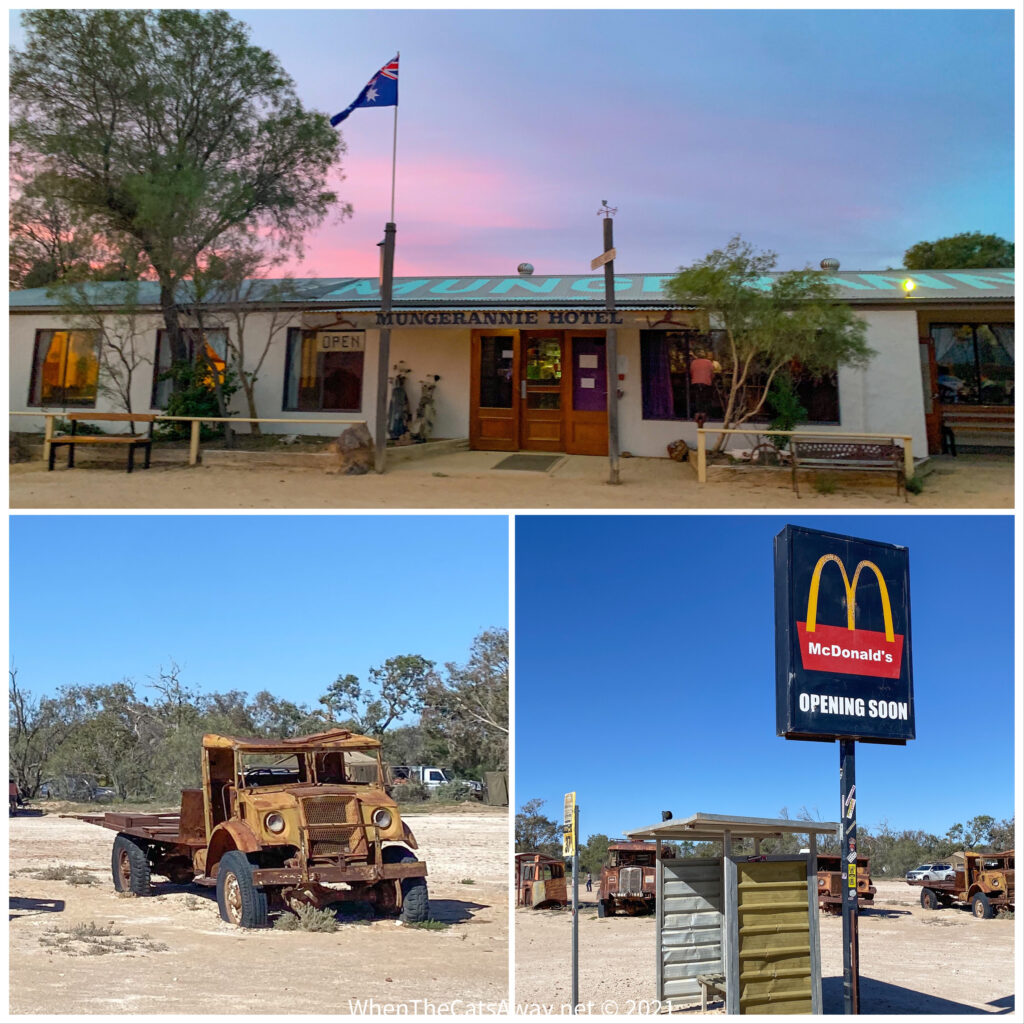
Once inside the pub, the walls and ceilings are literally covered in souvenirs of previous visitors. Hats are the main decor, then there are the strange dangling pieces of hair, which we then learn are rats-tails from old mullet hairstyles and beards!! A little bit gross, and very bizarre.
All the drinks are bottled, nothing on tap given the distance from anywhere. They ran out of red wine while we were there (not our fault) and I had the last bottle of soda water with my vodka, followed by the last nip of Jamison’s Whisky!
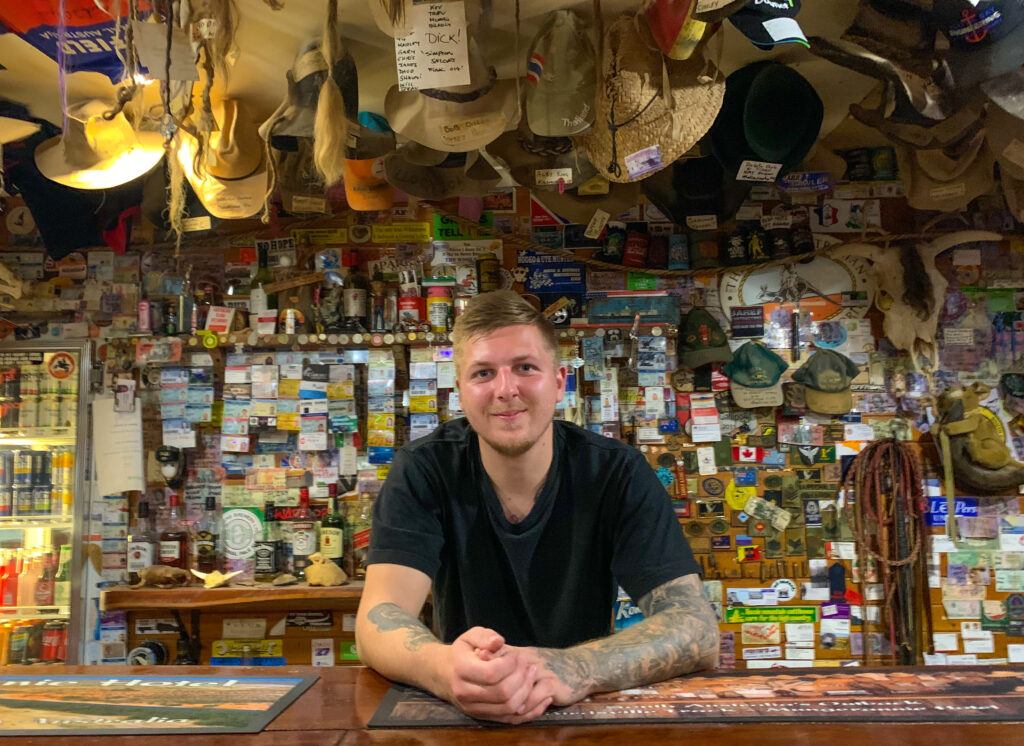
On our second night, Mr A had got chatting to a young couple on their way over to the east coast of Australia to work on a mango farm. We invited them to join us at the pub for some drinks, brought our own music and soon a party was happening. We were joined by a road-train driver who had pulled up for the night after driving 1,200km that day (he insisted no drugs were involved). We had a great night, ending at 1am when the bar started running out of drinks we wanted!
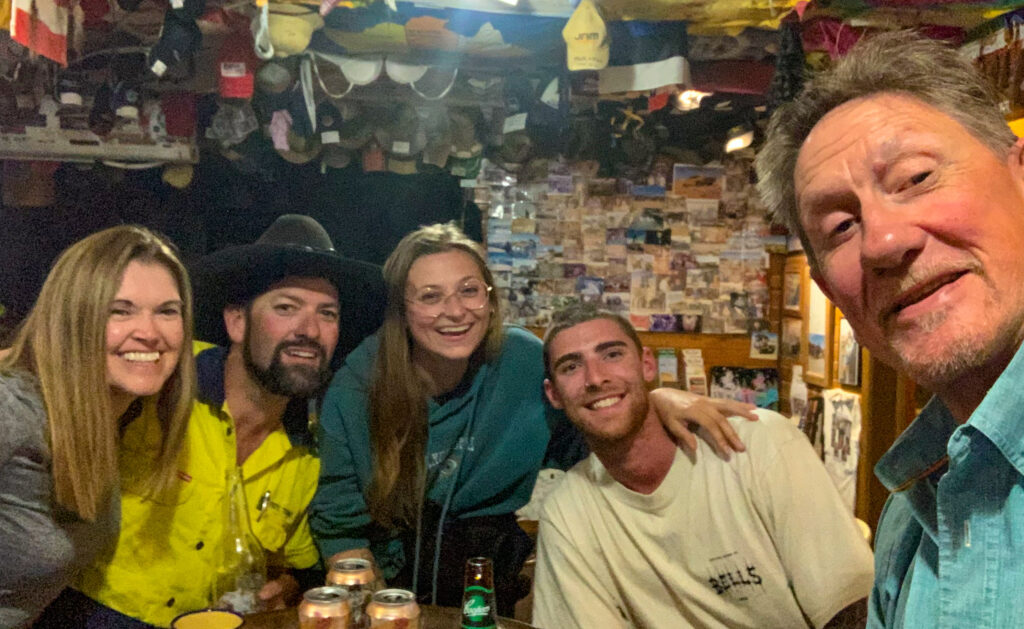
The following day we got ready for Blake’s arrival with great anticipation. Although we had made the most of our couple of days at the Mungeranie Hotel, we were not keen to make it our forever home!
To our relief he finally arrived around 3pm, his drive down the rough track made all the slower by the long empty truck. It had taken him 7 hours in total to reach us, doing a couple of jobs on the way. And after loading our home, he was going to have to do the same trip again in reverse. We looked on in awe of this tenacity and attitude, and hoped our Zone would make it to Birdsville without further misadventure.
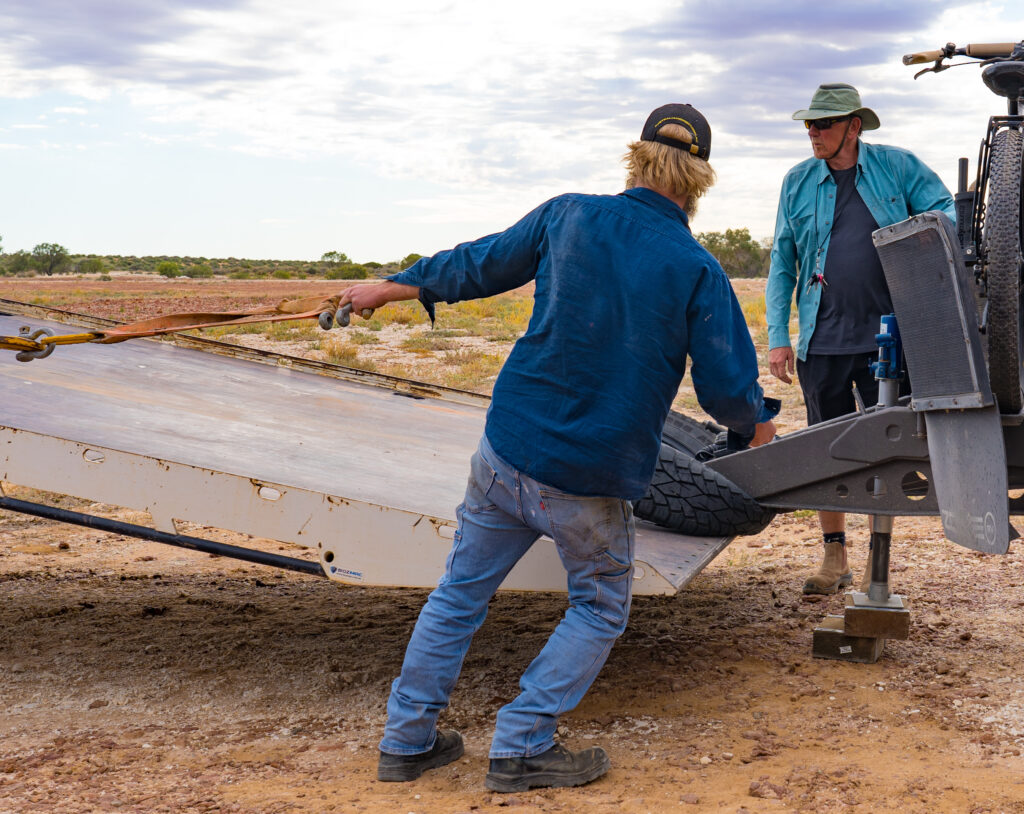
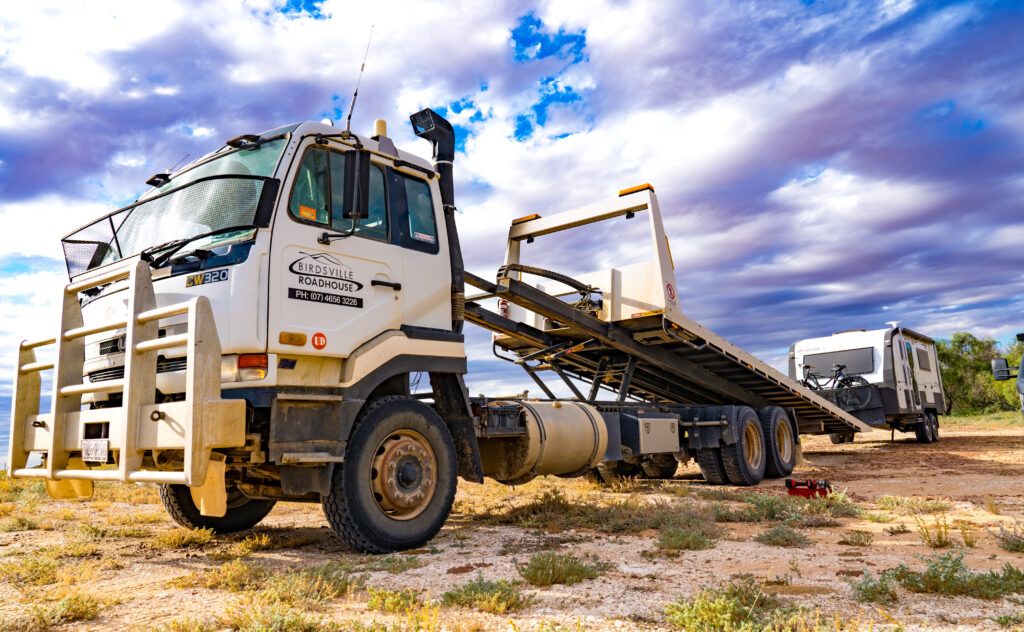
We left Blake to continue with the finishing touches, knowing we would be much faster on the track than him. We farewelled our faithful home and looked forward to seeing it tomorrow in Queensland, our fourth state of the trip.
We would like to thank and acknowledge the Yawarawarrka and Ngamini First Nation people, throughout whose traditional land we travelled on this journey.

